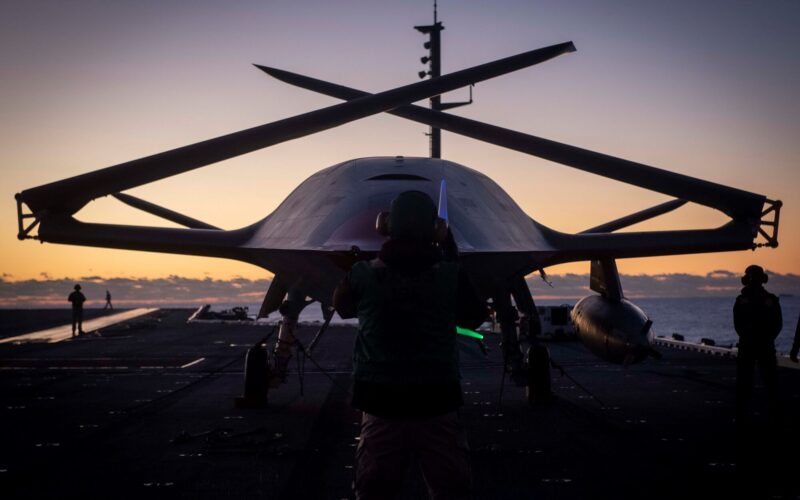The US Navy and Boeing completed the first series of tests on the MQ-25 Stingray unmanned aerial refueler on the deck of an aircraft carrier.
The Boeing-owned unmanned T1 test asset conducted several demonstrations aboard the USS George H.W. Bush, including “deck handling maneuvers, including connecting to the catapult and clearing the landing area,” the manufacturer reported in a press release.
Instead of a pilot, the Navy flight deck director (commonly known as a ‘yellow shirt’) gave instructions to a Boeing MQ-25 Deck Handling Operator who commanded the aircraft using a new handheld deck control device. These demonstrations tested the capacity of the MQ-25 to integrate into the carrier environment both in day and night operations.
“The Navy has a rigorous, well-established process for moving aircraft on the carrier. Our goal was to ensure the MQ-25 fits into the process without changing it,” said Jim Young, MQ-25 chief engineer. “From the design of the aircraft to the design of the system moving it, our team has worked hard to make the MQ-25 carrier suitable in every way.”
Before it moved onto a real ship, testing the deck behavior of the T1 began on the ground in November 2021 at Naval Station Norfolk Chambers Field in Virginia, United States, with lines painted on the airbase’s runway to simulate a carrier deck environment.
The Stingray will replace the F/A-18 fighters that are assigned to this role, with 20% to 30% of their flight time currently dedicated to refueling missions. The new drone will allow the US Navy to preserve the service life of the Super Hornets.
Throughout 2021, the MQ-25 demonstrated its capacity to refuel aircraft of the US Navy. These included a F/A-18 Super Hornet fighter in June 2021, an E-2D Hawkeye in August 2021, and an F-35C Lightning II fighter in September 2021. The MQ-25 will be able to refuel all of the US Navy’s carrier-capable aircraft.

